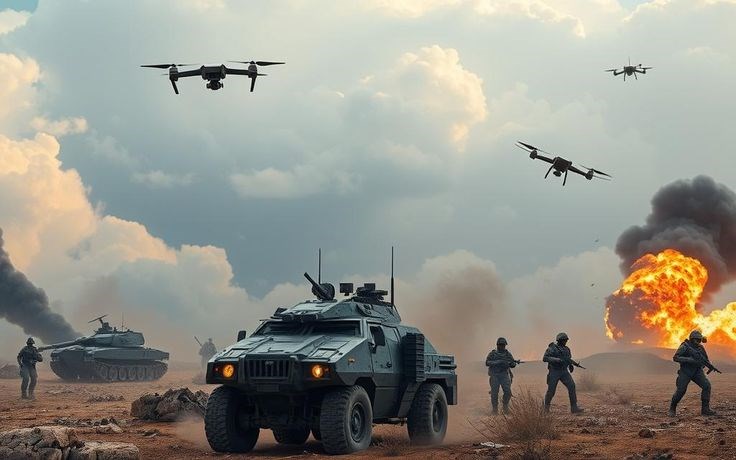Search here

28-Jul-2025 , Updated on 7/28/2025 4:45:43 AM
How Technology Is Redefining War
Cyber Warfare Redefines Battlefields
The concept of cyber warfare inherently changes combat by taking the battle to digital networks and cyber infrastructure rather than actual geography. The advantage of this domain is that it goes beyond geographical locations since deniable attacks can be conducted anywhere in the world and within seconds. Instead of blowing up tanks, fighters switch to the critical infrastructure such as power grids, financial systems, and communication networks. Using the techniques of espionage, sabotage, and disruption forces the operations to accomplish strategic results without experiencing kinetic force. The power of the asymmetric makes smaller entities stronger to a great extent. The pursuit of success requires constant innovation of defense and resilience because software and supply-chain weakness translate into immense attack surfaces. The threat is invisible and persistent and it makes cyberspace an essential continuant warfare realm.
AI Transforms Military Strategy
Artificial intelligence completely changes the military strategy allowing inventing the unprecedented speed, precision, and complexity of warfare. Its ability to handle large quantities of data in real-time provides better knowledge of the situation and forecast of threats and changes in the situations and resource deployment at its optimum. High-risk missions are carried out by the autonomous systems, which lessens the exposure of personnel. The command cycles are already fastened by AI decision support. Also, AI enables high-tech cyber warfare, electronic warfare, and information warfare, opening up new frontiers of algorithm war. Such evolution of technology demands completely reconsidered postulates focused on data superiority and robust networks, which characterize the present and future warfare.
Drone Proliferation Alters Combat Roles
The proliferation of drones transforms the nature of war and institutional arrangements radically. Armor and infantry groups unable to fly are presently in unmatched danger to ubiquitous unmanned air vehicles (UAS). This requires the changed tactics and force protection. At the same time, new experts are created: special drone operators, highly skilled teams of electronic warfare warring against UAS, and data analysts that try to filter through all the gathered information. Such a transformation lessens the dependency on the concentration of the frontline staff, steadily boosting the need of extremely skilled technical employees to operate at distance. The consequence is a newly refined combat environment in which the capability of remote sensing and precision striking has posed serious challenges to conventional force structures.
Information Warfare Manipulates Global Perception
Technology changes warfare and it is a fact because the major battlefield has shifted to the fight of controlling global opinion through complex information warfare. State and non-state actors are weaponizing digital instruments to bend the truth and affect international opinion. Messages that increase divisiveness and hostile propaganda are boosted by social media algorithms. The falsehoods that deepfakes and AI-generated content produces are so believable that they undermine trust. Artificial boosting and censorship of opinions are done through coordinated bot networks. This omnipresent influence is directed to disrupting the opposition, justifying moves, and influencing geopolitical outcomes without the use of any traditional resources, so perception management represents one of the most crucial strategic fields in the modern war.
Autonomous Weapons Raise Critical Questions
Autonomous weapons are transforming warfare because they shift the decision of life and death out of human hands and into the hands of algorithms. This change brings on very important ethical and legal issues that have to be answered. Allocation of responsibility over illegal actions or mistakes made by the use of machines that lack a human supervisor remains the top priority. When put into the hands of software, it will be much harder to be compliant with the requirements of the International Humanitarian Law, like distinction and proportionality. Moreover, accidental escalation and the lowering of the threshold of entering into a conflict, caused by the decrease of the immediately perceived human risk, should be regarded as the significant risks. Control mechanisms and governance structures on these systems ought to be laid down.

Content Writer
Hi, I’m Meet Patel, a B.Com graduate and passionate content writer skilled in crafting engaging, impactful content for blogs, social media, and marketing.
Join Our Newsletter
Subscribe to our newsletter to receive emails about new views posts, releases and updates.
Copyright 2010 - 2025 MindStick Software Pvt. Ltd. All Rights Reserved Privacy Policy | Terms & Conditions | Cookie Policy